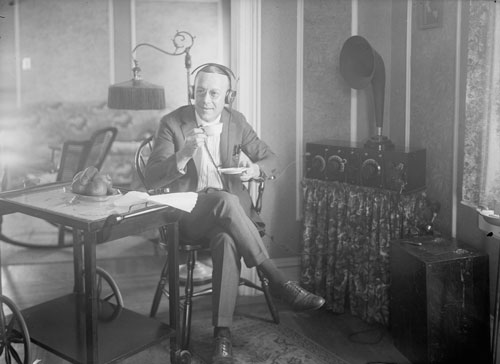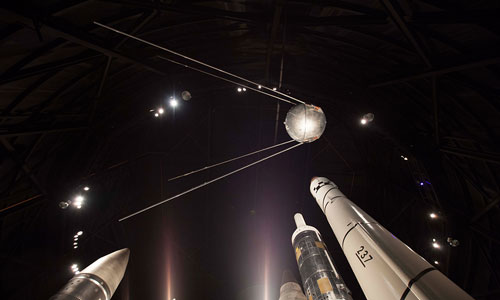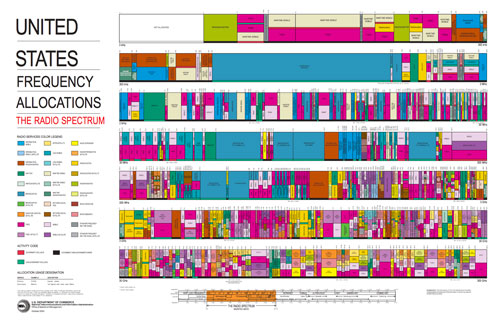What crowded the wireless spectrum before smartphones, anyway?
And of course, the fact is that the United States isn't the only country with spectrum needs, and there are parts of the airwaves that need to work between countries, such as shortwave radio, or maritime communication. An FCC report from 1949 lays out the depth of the issue:Of all these, television takes up by far the most space on the radio spectrum. That's because of the tremendous number of impulses required to produce television's 30 pictures a second. The engineers speak of it in terms of "information." The more information you have to transmit, the more space you take up on the air—the more the traffic the wider the highway has to be.
The development of FM and TV broadcasting, the rapid growth of land mobile communication, the inauguration of microwave links for general radio communication relaying, the increasing use of electronic aids to air and sea navigation, and the expansion of Government radio services have all contributed to problems of frequency allocation in the upper part of the radio spectrum.
And, as the ether becomes more congested, interference grows in seriousness. That is why mutual working arrangements are being put into effect, not only between services, but between nations.
The international aspect of radio has developed to such an extent that the primary allocation of frequencies must now be made by treaty or other agreement. This will permit maximum radio use with minimum interference.
— David Sarnoff, the longtime head of RCA, discussing his frustration with the then-burgeoning FM radio standard discovered by Edwin Armstrong and patented by the inventor in 1933. Armstrong's innovation, which wasn't compatible with Sarnoff's existing AM radio system, was seen as a threat to RCA's profits. In 1945, Sarnoff used his political clout to push the FCC to shift of the FM radio system to a different part of the spectrum, rendering all existing FM equipment obsolete and hurting its initial growth in the market. Armstrong, as pointed out byDamn Interesting, died in 1954 penniless, believing that he was a failure—but just a few years later, FM technology became the standard and Armstrong's widow was successfully suing RCA and other companies for patent infringement.*"I thought Armstrong would invent some kind of a filter to remove static from our AM radio. I didn't think he'd start a revolution—start up a whole damn new industry to compete with RCA."
The complicated map that lays out the myriad uses for wireless spectrum
— Michael Powell, the chairman of the FCC during the first half of the George W. Bush administration,discussing a shift toward making more roomfor mobile networks within the wireless spectrum. This approach has generally been followed by his successors, such as Obama appointee, Julius Genachowski, whospoke frequently of a "spectrum crunch"… a crunch thatsome were skeptical was even a thing. Whatever the case, this mindset (mixed with the fact that wireless providers have a lot of money) has led to mobile networks taking up a much larger share of wireless spectrum in recent years.*Sometimes, we get lucky and the march of technology changes the dynamic of the spectrum debate. The move toward converting television into a digital format, as painful and annoying as that was, is a great example of this in action.Digital television simply doesn't need as much space as analog TV ever did, which is why T-Mobile was able to buy a better network last month. As the push-and-pull over our limited amount of wireless spectrum rages on, we're going to see more situations like this, where technology improvements that take up less spectrum room win out over prior technologies, and that incredibly confusing spectrum map inevitably gets reorganized.But there are always strange edge cases. I recently pointed out one such edge case, involving wireless microphones in the United Kingdom. They're supposed to have their own dedicated spectrum, but they keep getting moved around, in part because there are other things that need the spectrum more.It's a scarce resource. It may be all around us, but there's only so much spectrum to go around."Wireless spectrum has the potential to solve so many problems that have been so persistent in the 100 years of the phone system."



